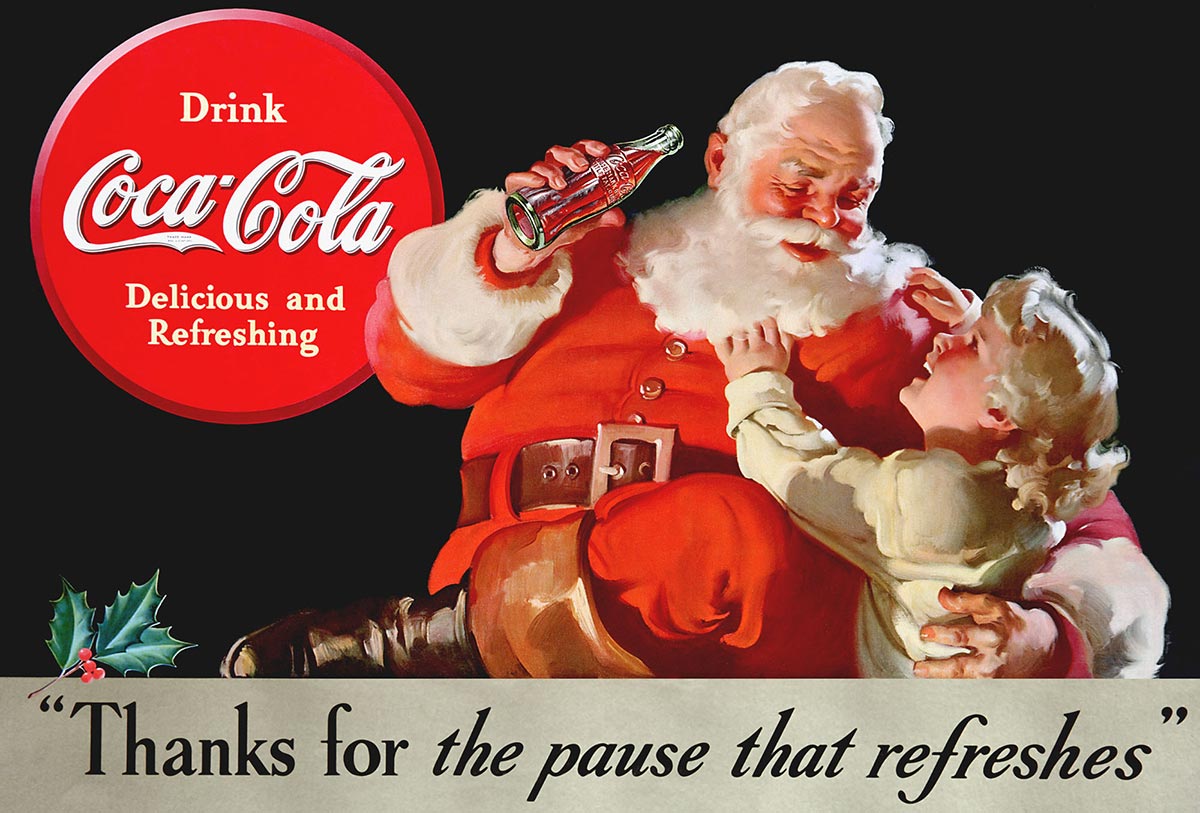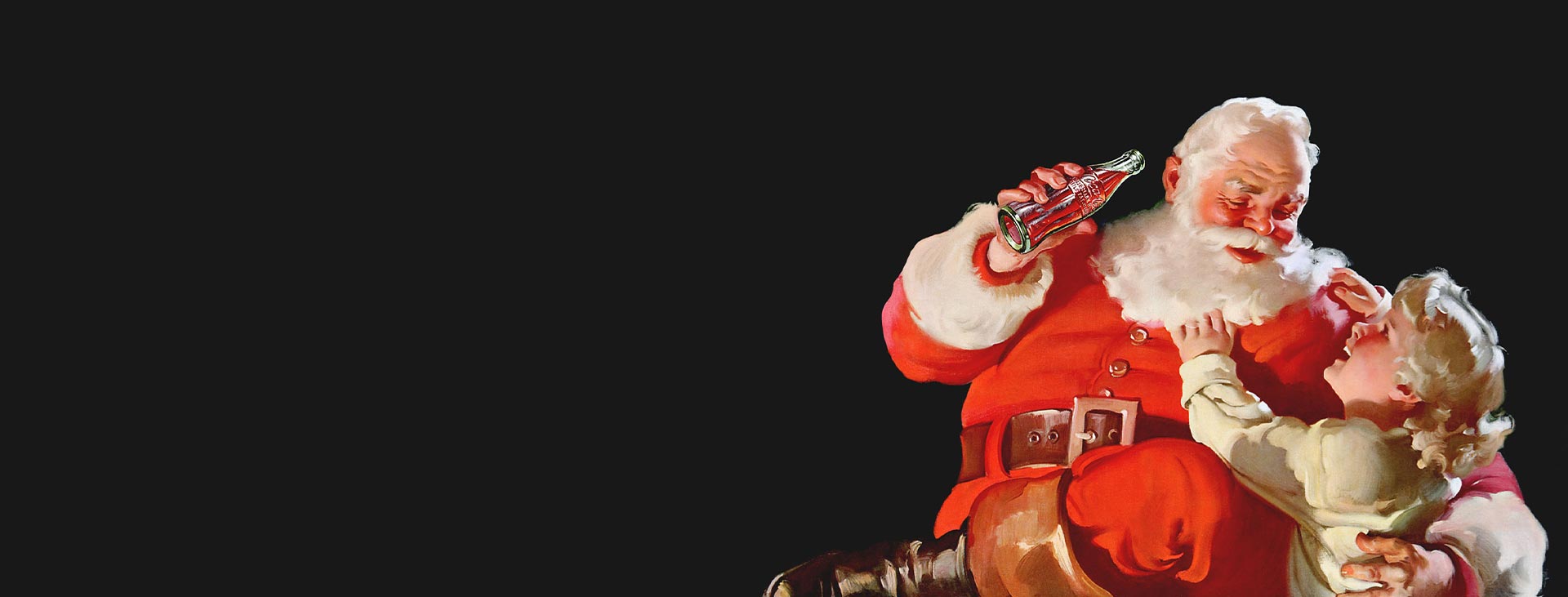
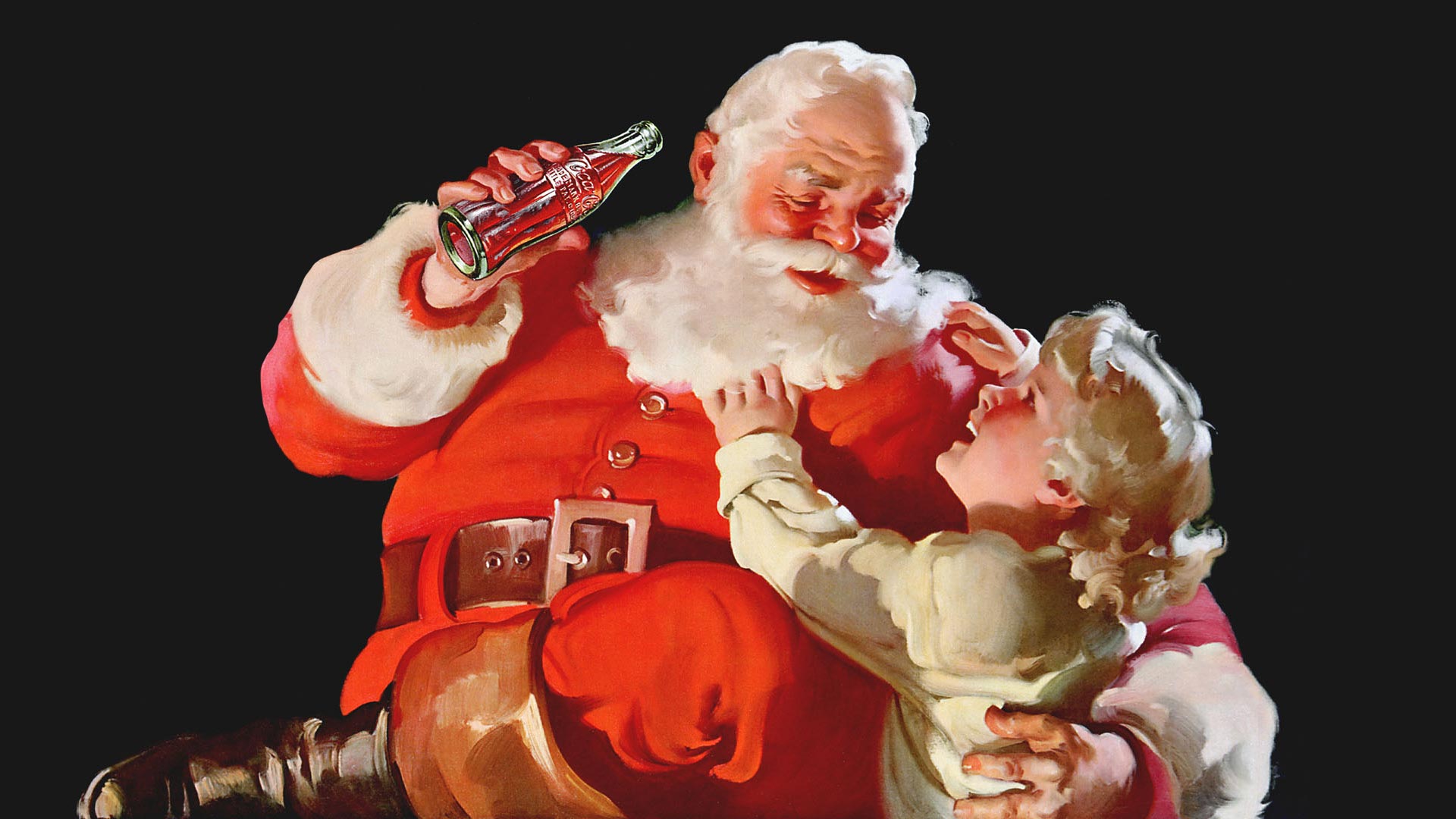
A white beard. A red suit. A belly like a bowlful of jelly. We could only be describing one figure. But where did that image come from? Is it true, as so many claim, that Santa was invented by Coca-Cola? Or is the story a bit more nuanced? Today, on the 4th day of our Twelve Days of Christmas in Advertising, we’re going to briefly dive into the history behind Santa’s iconic red and white ensemble and explore the role advertisers played in his creation.
Good old Saint Nick – the actual Greek Christian bishop who inspired the Santa myth – wasn’t bursting at the seams of a suit with a bag slung over his shoulder. The real guy probably looked more like this.
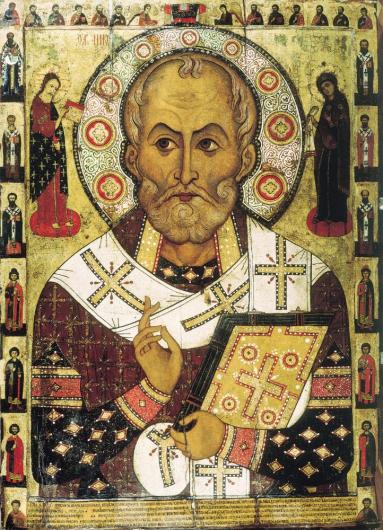
St. Nick started to become Santa in the Netherlands. Sinterklaas (which is where the name Santa Claus originates) was a skinny old man clad in red who “landed” from Spain each December to distribute candy and cookies to the nice kids around town. The legend likely came over to New York, which was originally a Dutch colony, and spread around America from there.
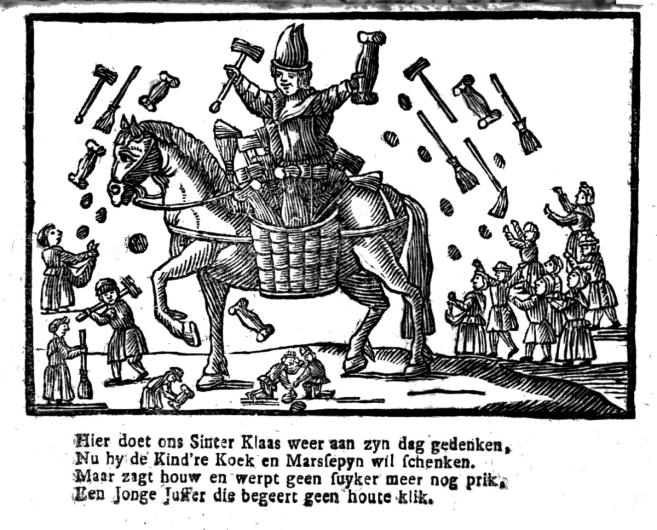
As you can see in below, Santa is already sporting red and white in New York all the way back in 1821! However, the illustration “Old Santeclause with Much Delight,” didn’t yet have the iconic hair and big belly that we see today.
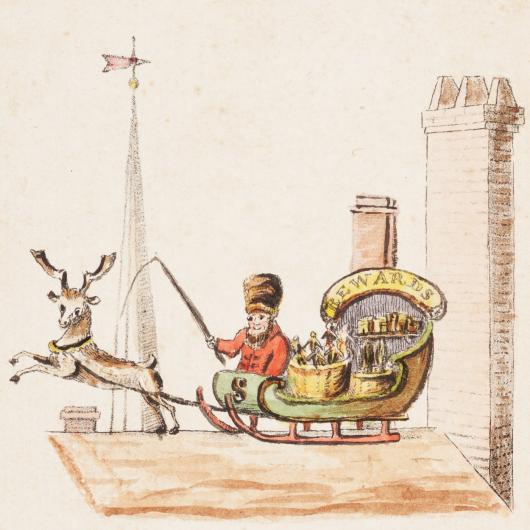
For the next hundred or so years, Santa’s image was in flux. He began to standardize when, during the American Civil War, political cartoonist Thomas Nast illustrated a cover of Harper’s Weekly that featured “Santa Clause” – a kindly old man who cheered up struggling troops during Christmas (which wasn’t yet a holiday). Nast’s version is usually credited as the origin of the Santa depictions we know today. To create him, Nast combined German traditions that celebrated “Sankt Nikolaus” with folk tales of elves.
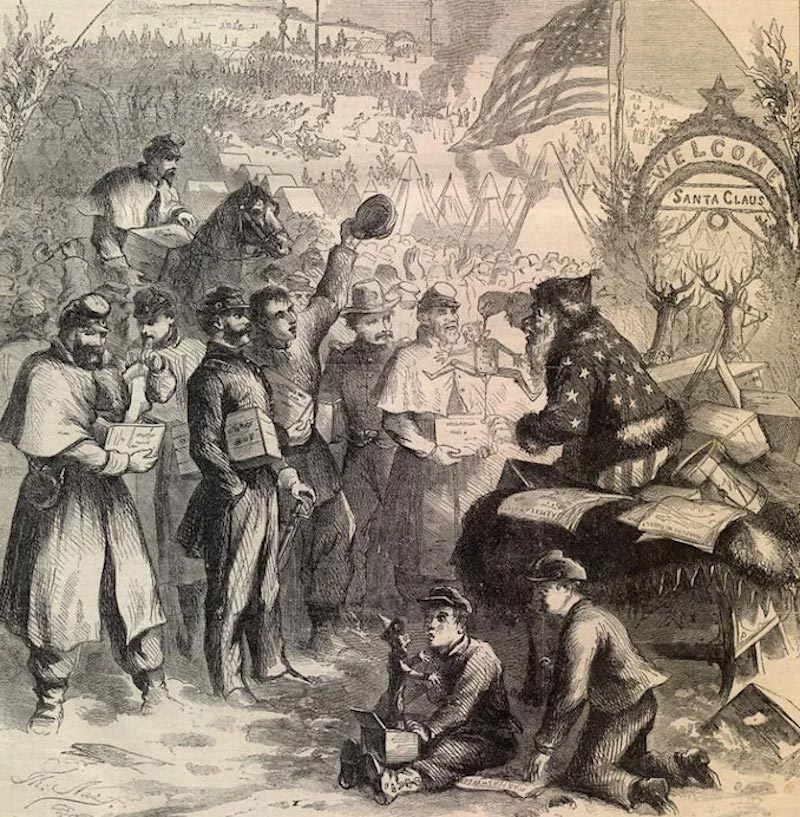
As you can see below, by 1898 Santa was next to stockings hanging on the fireplace and starting to resemble himself, though he was still pretty fit!
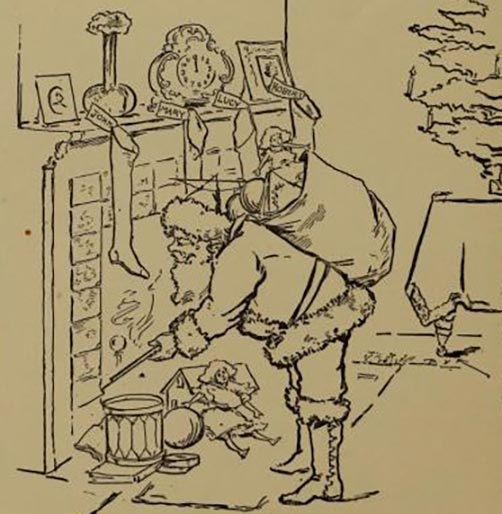
Slowly, artists added the bowlful of jelly belly and the white beard. If you take a look at this ad from 1906, he was pretty close to the Santa we know today (Coca-Cola wouldn’t create their iconic ads for another three decades).
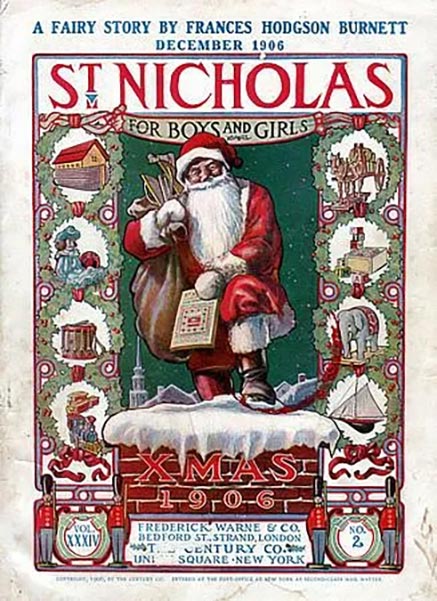
So what exactly did Coke contribute that gets them all the credit?
Coke’s main role was in the mass marketing of Santa. Most media was in black and white. Coke’s brightly colored ads on billboards and storefronts were so widespread across the country, everyone began to assume that Santa and Coca-Cola automatically went hand-in-hand. While not entirely new, its ability to change the public’s memory certainly distinguishes Coke’s Christmas campaigns as some of the most effective advertising of all time!
